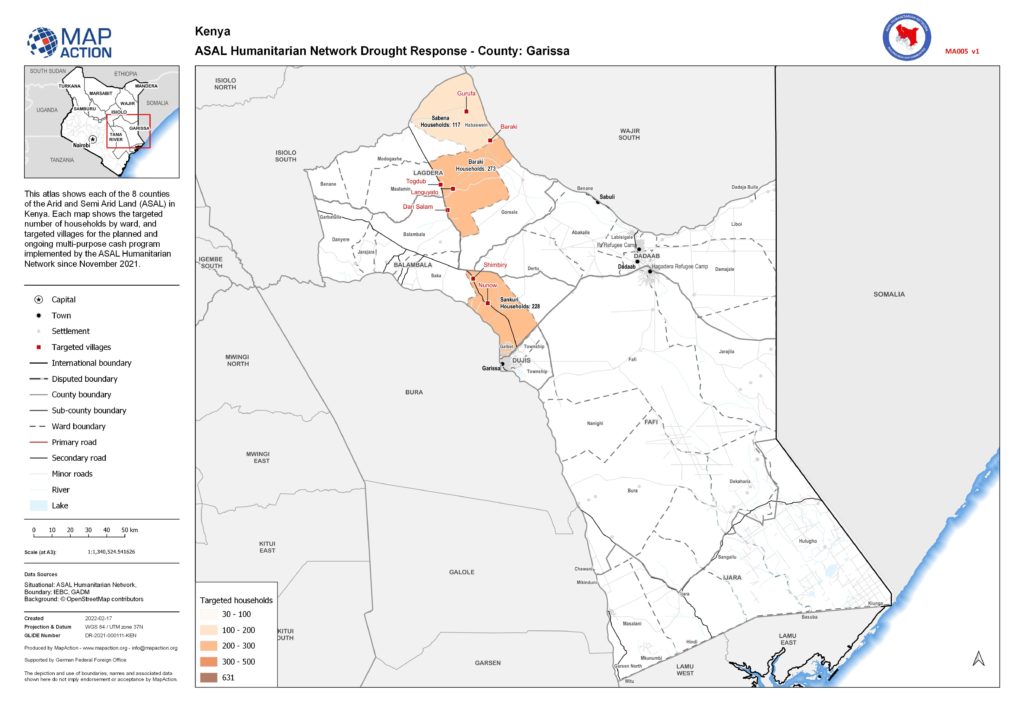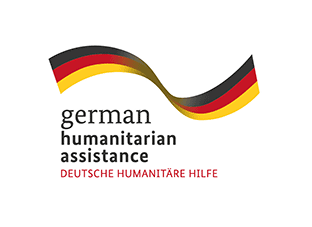
A serious drought is affecting parts of East Africa. Three consecutive failed rainy seasons has meant crops are failing, livestock is being badly affected and cereal prices are rocketing.
A drought warning has already been issued for many parts of northern and eastern Kenya – a mainly rural area with already high rates of poverty. Forecasts indicate that the food security situation is only likely to get worse, meaning that many more households will soon be in need of urgent humanitarian assistance.
MapAction’s support was requested by the Arid and Semi Arid Lands (ASAL) Humanitarian Network – a group of more than 30 local Civil Society Organisations (CSOs), community groups. Together with its partners (ACTED, Concern Worldwide and Oxfam), they are focused on the dry ASAL region of Kenya which has been particularly badly affected. More than 2.9 million people are at risk of going hungry and losing their livelihoods here, and thousands of young children are in urgent need of treatment for acute malnutrition.
A large part of the response has involved multi-purpose cash transfers to communities which are aimed to boost the local economy, and protect lives and livelihoods. So far it has reached over 5,000 affected households.
Since November 2021, MapAction has been supplying information management to the ASAL Humanitarian Network to support this response. We have provided tools to help manage their data on the response which then meant this information could be mapped. Once the information was on a map we could verify the data and this subsequently allowed the response to be presented at detailed village and ward level, rather than at regional level. This level of detail in our visualisations showed which partner was responding where, in which village location and what the response entailed.
MapAction also analysed and mapped the baseline drought survey commissioned by ASAL Humanitarian Network in November 2021. This survey assessment showed indicators such as the length of drought, and the impact of drought on crops, livestock and conflict. Mapping these indicators allowed the survey information to be visualised and compared across sub-counties highlighting key issues that the drought has impacted.
By mapping the drought response at various geographic levels, we were able to communicate the impact of the programme in a powerful way. This allowed ASAL Humanitarian Network to share these maps with partners, donors and within the network itself to explain and also help drive decision making.
The maps produced from this programme can be seen here.
As well as increasing prospects of drought, many of these very dry arid and semi-arid areas have been degraded from deforestation and overgrazing, which further reduces the productivity of these lands. This threatens food security, livelihoods and biodiversity. Early action from MapAction and other agencies aims to prevent loss of life and sustain livelihoods in these areas.
MapAction is grateful to the German Federal Foreign Office for funding this work.

